Versatile and versatile!
The Universal Micro Tribometer (UMT) from Bruker (formerly CETR) can be adapted to almost any tribological test task by a variety of available measurement modules. In addition to simple model tests, component tests with complex stress types are possible. Encoder-controlled measuring axes guarantee maximum precision. Different force sensors enable highly accurate measurements over several orders of magnitude.
The institute has three devices (UMT2, UMT3 and Tribolab) as well as numerous motion modules with which purely rotational as well as oscillating linear motions are possible.
In addition, the instrument can also be used to carry out various types of scratch tests on coatings (in accordance with DIN EN 1071-3).
With our high-temperature unit, tests at temperatures of up to 950°C are also possible.
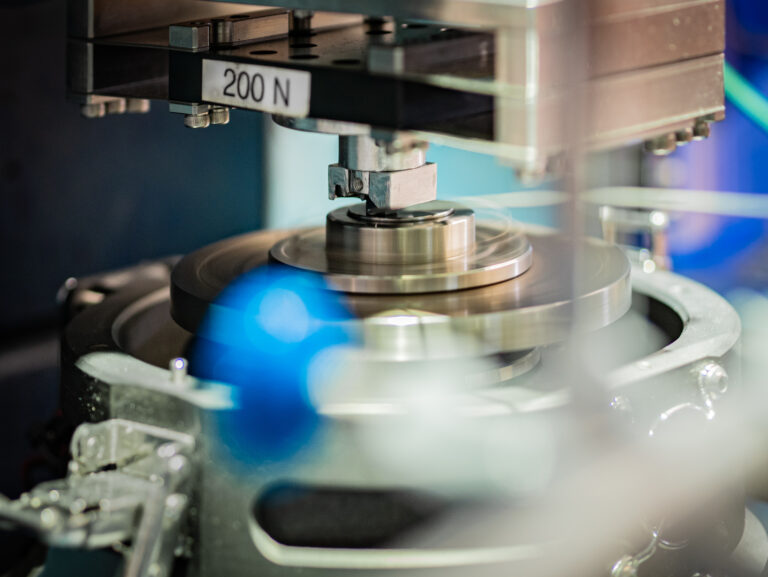
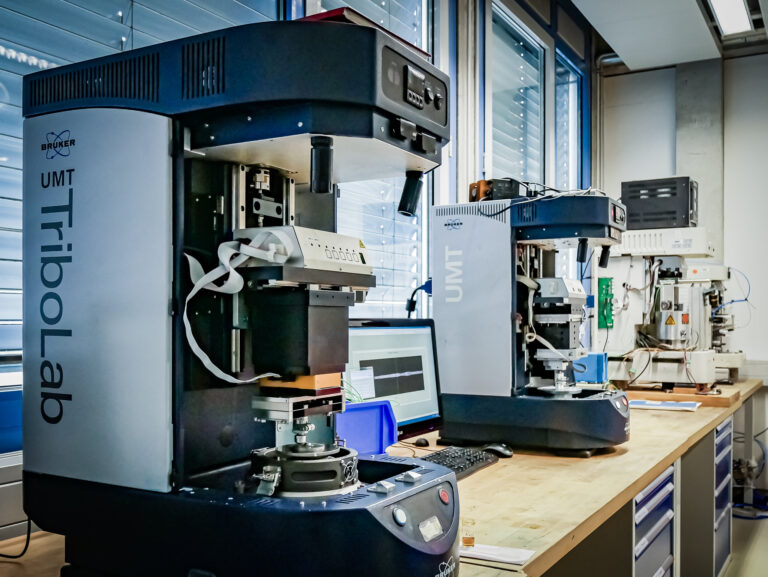
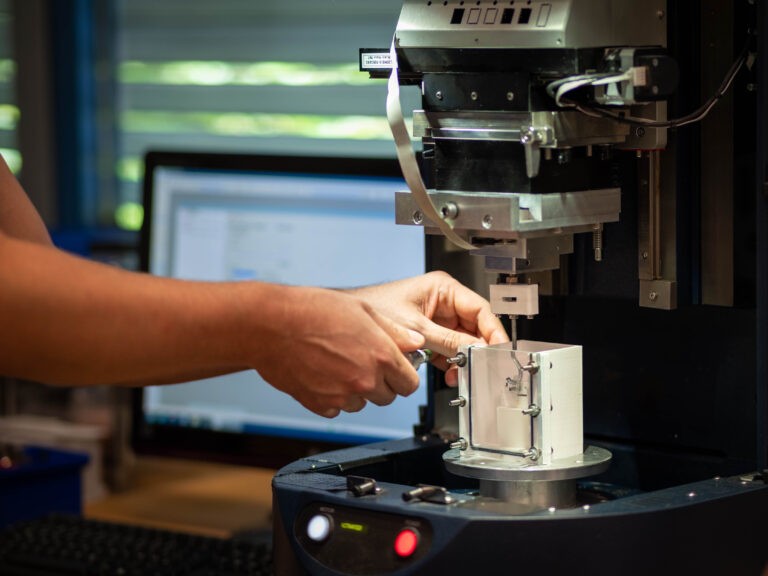
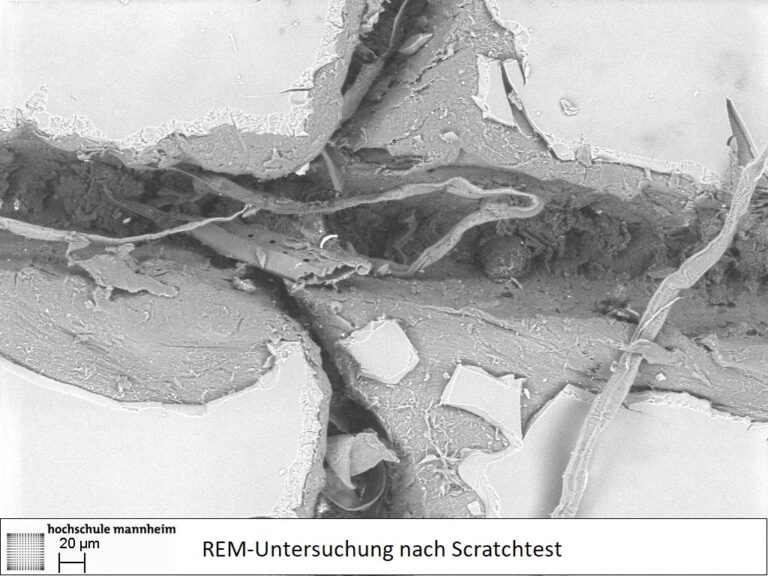
Movement types
Sliding (rotation and oscillation)
Specimen geometries



Speed (rotation)
0,1 … 3,000 1/min
Frequency (oscillation)
0,1 … 25 Hz
Stroke (oscillation)
0,01 … 100 mm (y-direction)
Traverse speed of the crosshead
0.001 to 10 mm/s (x-direction)
Load
up to 2 kN (z-direction)
Temperature
Room temperature … approx. 80°C
up to 950°C in the high temperature unit
up to 200°C in oil bath
Friction conditions
Solid state, boundary and mixed friction, elastohydrodynamics, hydrodynamics
Contact geometry
Point, line and surface contact
Possibility to move the upper specimen holder
in z-direction 150 mm (resolution 1 µm)
in x-direction 150 mm (resolution 1 µm)
Normal and friction force
5 mN to 2 kN with staggered force sensors
Torque
up to 5.7 Nm
Linear wear amount
via the z-axis tracking
Acoustic Emission
Flexible placement
Temperature
Flexible placement
- Investigation of stick-slip effects
- Precision measurements of friction force and coefficient of friction
- Performance of friction and wear tests on ferrous and non-ferrous metals, plastics, ceramics, composites and coatings, with and without lubricants, e.g. based on ASTM D 3702 Standard Test Method for Wear Rate and Coefficient of Friction of Materials in Self Lubricated Rubbing Contact Using a Thrust Washer Testing Machine or ASTM G 99: Standard Test Method for Wear Testing with a Pin-on-Disk Apparatus
- Tribological testing of both solid and liquid lubricants, oils and greases
- Screening tests for various lubricants
- Scratch tests based on DIN EN 1071-3 (“Advanced ceramics – Methods of testing ceramic coatings, Part 3: Determination of adhesion and shapes of mechanical failure by the scratch test”)
- Abrasive wear tests based on ASTM G 132: Standard Test Method for Pin Abrasion Testing
- ASTM G137 -97: Standard Test Method for Ranking Resistance of Plastic Materials to Sliding Wear Using a Block-On-Ring Configuration
- ASTM G77 – 17: Standard Test Method for Ranking Resistance of Materials to Sliding Wear Using
Block-on-Ring Wear Test
We will be pleased to examine special adaptations (e.g. for assemblies) and tests on request.
Example: Tensile tests on hydrogel samples for use in biotechnology
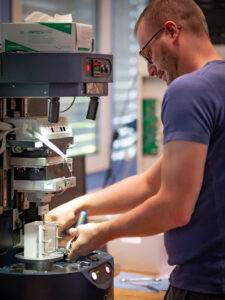
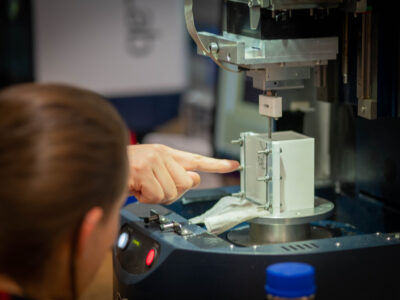

In collaboration with the neighboring Institute of Molecular and Cell Biology (MZB), tensile tests with our 5 mN force sensor are performed on the UMT in a special environmental medium. Material parameters such as the modulus of elasticity and tensile strength of the hydrogel are determined.